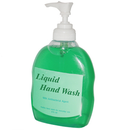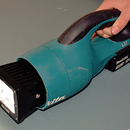Introduction: Making Reproduction Vintage Tin and Timber Signs
This instructable is all about printing onto surfaces other than paper. It could be plywood, metal, timber, or a painted surface. The results aren't as crisp as you would get on paper but is perfect if you want something that looks like it has a bit of age to it.
The process is fairly simple but does take a little practice too get the feel of it, so don't be to disappointed if your first attempt is not as good as you hoped. After 2 or 3 attempts I'm now quite good at the the process, and it is ideal for making reproduction vintage tin and timber signs, or printing graphics onto wooden boxes or other objects you want to look aged.
Step 1: Stuff You Will Need
- A surface, plywood is good to start with
- computer with an image you would like to print
- laser printer, I haven't tried it with other types of printer but I'm pretty sure it will still work.
- water proof PVA glue
- fingers
- water
- clear coat lacquer in a spray can
- 24 hours
- A solvent to clean off the oil or grease
- wet and dry sand paper
- good quality white spray paint
Step 2: Print Off You Image on Paper
No we are not going to shove plywood through your Dads new laser printer, sorry to disappoint. first thing is to select something you would like to make into a sign or art work. Google images is a great place too look, find an image that is fairly large, if it doesn't print well on paper putting it on timber isn't going to improve it any.
Also the web site http://graphicsfairy.blogspot.com.au/ has some cool vintage graphics.
Once you have your image you need to mirror the image and if the colours are a bit washed out adjust that as well. In the process of transferring the image to timber the colours will washout and darken a little so try and get the image fresh looking. When transferring the image to a painted surface or tin this is not such a problem.
Most computers will have some sort of image viewer program to allow you to do flip and adjust the colours, I use the auto colour button on my ubuntu computer which work extremely well.
If you don't have anything like that there is a free photo editing program named Gimp you can download, which has more features than you will ever need.
http://www.gimp.org/
Next print off your image to the size you require.
Step 3: This Can Get Messy
This step and the next is where a bit of practice comes in. If you are transferring you image to a porous surface like plywood or timber, you need to put the glue onto the picture side of the paper. It needs to have a and even coat without any missed spots, and more glue than you think you need to glue it down, but not so much that the paper has liquid glue trapped under it. It may take a couple of goes to a feel for this and get this step right.
Next pace the paper on the plywood and rub the paper to get the glue thoroughly stuck to the plywood. It may help to use a roller or a roll of tape as a roller, if you have too much glue it can be rolled and squeezed out the side of the print. The main thing to remember is that every part of the paper must be thoroughly stuck down.
Once that is done the best thing to do is wait 24 hours for the glue to fully dry.
Step 4: Tin Signs
The process for making a tin sign or transferring on to metal is very similar, but there is a couple of small differences. Obviously you need to cut and drill you sign to the right size and remove the sharp corners, But you also need to give you sign a light sand with 600 grit wet and dry and give a though clean before painting with a good quality white spray paint.
After waiting for the paint to dry which is probably 24 hours, you need to give the sign another sand with 600 wet and dry and thoroughly clean the sign as this will give the glue something to adhere to.
Now this part is different because your dealing with a non porous surface you don't need quite as much glue and this time coat the sign in glue rather than the paper.
You then stick the paper on and the rest of the process is the same for both materials.
Step 5: Removing the Paper
After waiting for the glue to dry, the paper is removed by wetting your fingers and rubbing the paper off. This requires a little practice as if you rub too hard you will remove the image as well, or if you get everything too wet, the image can also be damaged.
It not too difficult and it the image doesn't have to be perfect as it will look aged anyway. Try and get most of the paper off, once the image looks pretty good wet this is what it will look like when finished. Leave the sign in the sun to dry the image will turn hazy this is normal.
If you think you can get more of the paper of wet again and have another go, but a bit haze on the image will disappear in the next step.
Step 6: Magic Clear Coat
Once your sign is thoroughly dried out it will look hazy. But the clear coat will fix this like magic, it unbelievable how well this works, just spray on a fairly heavy coat of clear and your done. Now you can stick it on your wall or put it in a frame.
You can also use this process to put logos or pictures on projects and give a boring old box a bit more appeal.
If you want to make the tin signs look really slick and glossy, after the clear coat has dried wet sand it with 600 grit clean and dry it and give it another couple of coats of clear.
Just a note on artist gel medium . Gel medium is normally use for this process I tried it on one sign and found it more difficult to use than glue as it drys very quickly and I had large parts of the image come off. Comparing the colours and image quality there was no real differences between the gel and the glue and the gel was $20 for a small 250ml tub. Overall I was quite disappointed with the gel.

Participated in the
Holiday Gifts Contest













